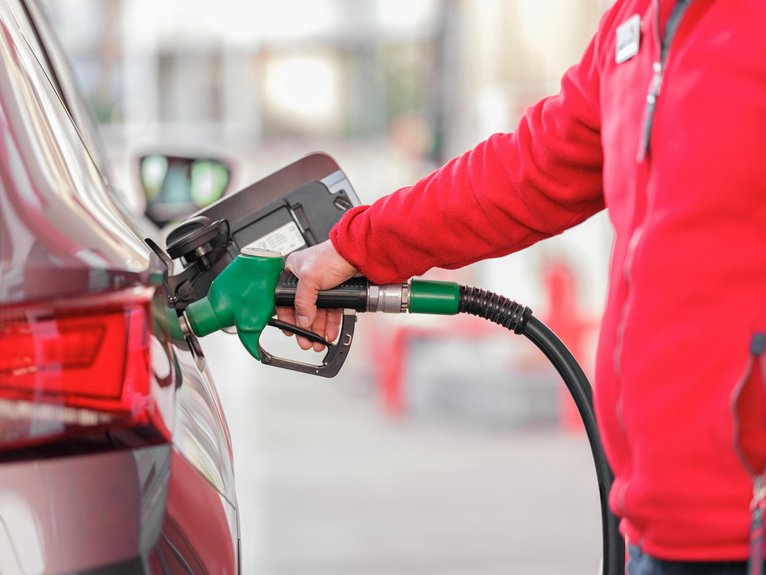You’re facing a common dilemma in today’s volatile fuel market: stick with your current vehicle or upgrade to something more efficient? The math isn’t always straightforward. Your potential savings depend on several key factors: current fuel consumption, expected mileage, and the depreciation hit you’ll take on your trade-in. While the upfront costs may seem prohibitive, the long-term performance metrics often tell a different story. The question becomes not just about immediate economics, but also future-proofing your transportation strategy.
Calculating the True Cost of Vehicle Ownership
When evaluating a potential vehicle purchase, you’ll need to quantify all ownership expenses beyond the sticker price. Calculate your total cost of ownership (TCO) by factoring in depreciation rate, financing terms, insurance premiums, maintenance schedules, and fuel economy metrics.
Depreciation constitutes the largest expense—typically 40% of five-year ownership costs. Track your vehicle’s projected residual value using industry databases.
For fuel calculations, multiply your annual mileage by the vehicle’s consumption rate (L/100km), then by projected fuel prices. Don’t overlook maintenance intervals—higher-efficiency vehicles often require specialized service protocols.
Insurance costs vary considerably between models; obtain quotes before committing. Quantify tax incentives for fuel-efficient vehicles against your specific tax situation.
This thorough TCO analysis provides the performance metrics necessary to determine if trading up delivers genuine economic advantages.
Breaking Down Fuel Savings vs. Purchase Price
The true value proposition of upgrading to a fuel-efficient vehicle emerges from a direct comparison between acquisition costs and operational savings.
You’ll need to calculate your break-even point—the timeframe required for fuel savings to offset the vehicle’s purchase premium.
Apply this formula: Break-even period = (Cost difference between vehicles) ÷ (Annual fuel savings). For example, a $5,000 premium on a hybrid that saves $750 annually in fuel yields a 6.7-year recovery timeline.
Factor in depreciation rates; efficient vehicles often retain value better.
Don’t overlook maintenance differentials—some efficient models require specialized service, while others (particularly EVs) substantially reduce maintenance expenditures.
Your driving patterns dramatically impact this equation. High-mileage drivers achieve faster returns than those with minimal annual usage, potentially cutting break-even periods by 50%.
How Your Driving Habits Impact Potential Savings
Because individual driving behaviors directly influence fuel consumption metrics, your personal habits behind the wheel can dramatically amplify or diminish projected efficiency gains.
Aggressive acceleration depletes fuel reserves at 3-5 times the rate of gradual acceleration, while maintaining speeds above 50 mph increases aerodynamic drag exponentially.
You’ll maximize ROI on a fuel-efficient vehicle by eliminating idling (which consumes 0.2-0.5 gallons/hour), optimizing route selection to minimize stop-frequency, and implementing hypermiling techniques.
Data indicates properly inflated tires alone improve efficiency by 3%.
Urban drivers with frequent stop-start patterns typically realize greater savings from hybrid powertrains, whereas highway commuters benefit more from diesel or aerodynamically optimized conventional vehicles.
Quantify your driving profile before purchase to guarantee technology alignment with usage patterns.
Environmental Considerations Beyond MPG Ratings
While fuel efficiency metrics provide valuable consumption data, thorough environmental assessment requires evaluation of numerous additional parameters beyond standardized MPG ratings.
Consider your vehicle’s lifecycle emissions profile—manufacturing impacts can constitute 30% of total environmental burden. High-efficiency vehicles utilizing rare earth metals in batteries may offset operational gains through extraction-related pollution. Scrutinize manufacturing carbon footprint, projected operational lifespan, and end-of-life recyclability.
You’ll need to quantify tailpipe emissions beyond CO2, including NOx and particulate matter that impact local air quality. Additionally, fuel source matters greatly; electric vehicles running on coal-generated electricity create displaced emissions rather than eliminated ones.
Hybrid systems optimize urban driving patterns while hydrogen alternatives offer zero-emission operation contingent upon production methodology.
Conduct holistic environmental analysis incorporating these parameters to determine if replacement delivers net ecological benefit versus continued operation of existing assets.
Exploring Alternative Vehicle Technologies: Hybrid, Electric, and Beyond
As you evaluate replacement options for your current vehicle, understanding the performance profiles of alternative propulsion systems becomes critical to optimizing both efficiency and driving dynamics.
Hybrid powertrains deliver immediate torque enhancement while maintaining conventional fueling infrastructure compatibility. You’ll experience 20-40% fuel economy improvement versus comparable ICE models.
Full electric vehicles eliminate tailpipe emissions entirely, with modern EVs achieving 250+ mile ranges and sub-4-second 0-60 acceleration figures.
Hydrogen fuel cell vehicles represent the next evolution, combining EV-like performance with 3-5 minute refueling times.
PHEVs bridge technologies with 20-50 mile electric ranges followed by hybrid operation.
Consider charging infrastructure availability, battery degradation parameters, and regenerative braking efficiency when selecting your platform. Each technology presents distinct performance advantages based on your driving profile.
Conclusion
Your optimized TCO (Total Cost of Ownership) hinges on quantifying depreciation rates against projected fuel economy gains. You’ll maximize ROI by correlating driving patterns with powertrain efficiency metrics. Don’t overlook regenerative braking coefficients in hybrids or kWh consumption ratios in EVs. Factor in emissions analytics beyond standard MPG metrics. Your trade-in value proposition becomes favorable when lifecycle efficiency calculations demonstrate positive cost-performance equilibrium within your specific usage parameters.



